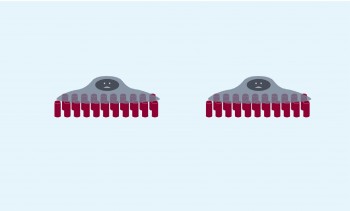News
New animation from the British Heart Foundation shows how SEMS research into tiny tech is helping to treat heart failure
3 April 2018


Heart failure affects an estimated 920,000 people in the UK. It means that your heart can't pump blood as well as it should do. One of the most common causes of heart failure is a heart attack. After a heart attack the damaged heart muscle can become stiff. This means your heart can't beat as well as it did. Heart muscle stiffness is also caused by inherited heart conditions such as hypertrophic cardiomyopathy and dilated cardiomyopathy, which also mean your heart can't beat efficiently.
At Queen Mary University of London, the British Heart Foundation is funding Dr Thomas Iskratsch from the School of Engineering and Materials Science.
In the lab, Dr Iskratsch and his team use nanotechnology to imitate the heart's mesh with tiny pillars. Each one is 500 nanometres wide - 150 times smaller than the width of a human hair. Researchers put heart cells on these pillars, then measure what happens to them when the pillars get stiffer. They do this with an advanced imaging technique that uses microscopes and tiny lasers to look at individual molecules inside cells.
The team discovered that if the pillars making up the mesh get stiffer, the heart muscle cells notice and stop working properly - so the heart function gets even worse and over time could lead to heart failure. This discovery means the researchers can look for drugs that will help the heart cells work better when the mesh gets stiffer.
The British Heart Foundation has created this animation to show how the Iskratsch group is using nanotechnology to investigate heart failure:
| Contact: | Thomas Iskratsch |
| Tel: | 020 7882 3674 |
| Email: | t.iskratsch@qmul.ac.uk |
| Website: | |
| People: | Thomas ISKRATSCH |
| Research Centre: | Bioengineering |
Updated by: Thomas Iskratsch




